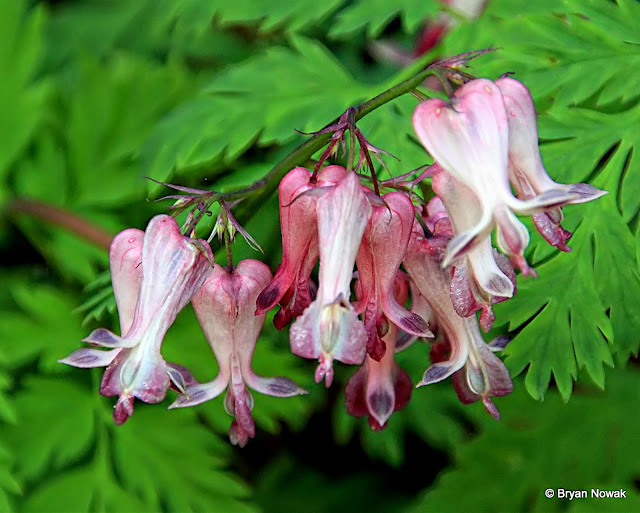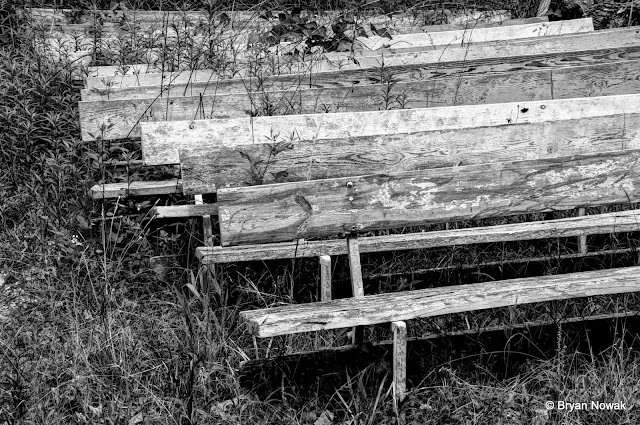Bleading Heart
Dicentra eximia
Also known as Wild Bleeding Heart, Eastern Bleeding Heart and Turkey Corn. It grows on cliffs, rock outcrops, and rocky slopes of the Appalachian Mountains from New York to Georgia.
We look for this plant each Spring growing on the rocky cliffs along the road heading to Cades Cove from Townsend. It's always a "must stop."
There is also a very different meaning for the word "bleeding heart." Merriam-Webster dictionary defines this as a person who shows extravagant sympathy especially for an object of alleged persecution. The term is often used associated with people of very strong libertarian or liberal views.
"Bleeding" (meaning "generous") came from the late 16th century, and the notion of one's heart bleeding as a figure of emotional anguish is from late 14th century, but the most common image associated with that period is the "bleeding heart of Jesus."
Jesus was so passionate and extravagantly sympathetic toward a people lost in sin that He came to this world as light in the darkness, demonstrated the great love of God to us with words and actions, then willingly gave up His life on a cross as the perfect Lamb -- sacrificed for our forgiveness, redemption and salvation.
Jesus said, "For God so loved the world that he gave his one and only Son, that whoever believes in him shall not perish but have eternal life." (John 3:16)
and...
"Greater love has no one than this: to lay down one’s life for one’s friends. You are my friends if you do what I command." (John 15:13-14)
Yes, Jesus' heart bled for you and me -- His friends. He proved it by physically bleeding from head to toe that fateful day over 2000 years ago. But that was not the end; only a new beginning. For Jesus still loves us today, as He is alive and sitting at the right hand of God the Father, desiring a personal, genuine and joy-filled relationship with you.
And His bleeding heart still cries, "Let anyone who is thirsty come..." (John 7:37)










Comments
Post a Comment